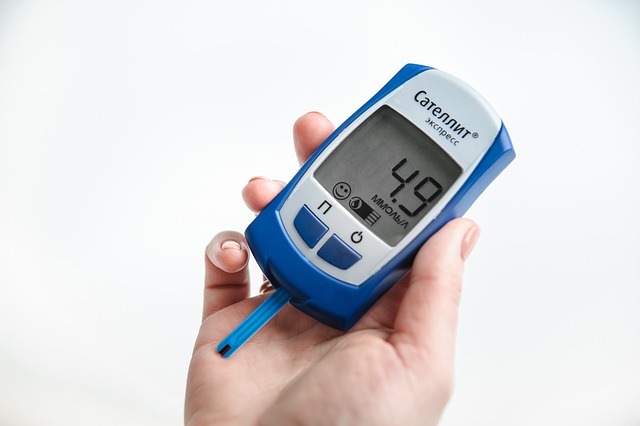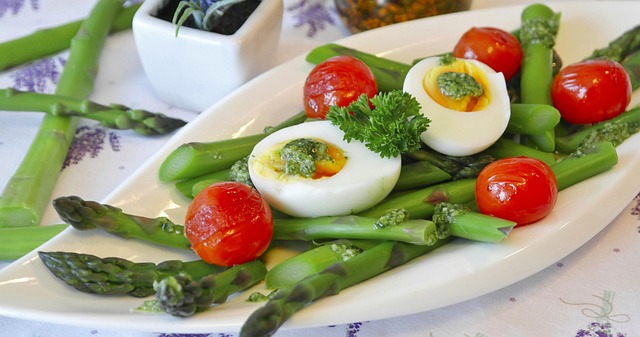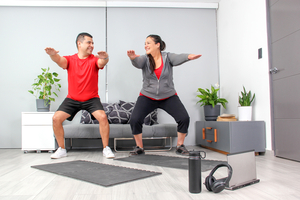Figuring out what to buy at the grocery store can feel overwhelming. Here is a quick guide with tips to help you become a grocery shopping pro!
Make a List
Make a list before you head to the grocery store so you can buy the foods you need and avoid foods you don’t need. First, think about the meals and snacks you are planning to have in the coming days. You can make a complete meal plan, stick to your usual meals and snacks, or just make sure you have enough nutritious food to get to your next shopping trip.
Then, check which foods you have in your kitchen and which you’ll need to purchase on your shopping trip.
Here are some questions to ask yourself to help get the items you need.
- Do you have enough vegetables and lean proteins to have a portion at most meals and snacks?
- Which snack options do you have for various situations that you’ll be in during the coming days?
- What will you be eating for breakfast most days?
- Are you running low on any pantry staples that you depend on, like peanut butter, whole-grain pasta, spices, cooking spray, tomato sauce, and tuna pouches?
Nutritious Foods to Include
Here are some healthy foods around the supermarket that may be on your list.
- Produce (fruits and vegetables)
- Lean proteins
- Reduced-fat dairy and egg products and alternatives
- Bread, cereal, and other grains
- Pantry staples
- Snack foods
- Fridge staples
- Beverages
Produce (Fruits and Vegetables)
Fruits and vegetables are low in calories, filling, and packed with nutrients. Aim for at least 3 cups of non-starchy vegetables each day. Salads, cooked vegetables, and raw vegetables all count. Frozen vegetables can be good options, too. Check for plain options without added salt or sauces.
Here are some examples.
- Greens like lettuce, spinach, arugula, mixed greens, collard greens, mustard greens, and kale
- Tomatoes, carrots, onions, cucumbers, and celery
- Bell peppers, zucchini, eggplant, and mushrooms
- Broccoli, cauliflower, cabbage, and Brussels sprouts
Starchy vegetables count towards your carbohydrate servings. Here are some examples.
- Potatoes (choose fresh potatoes rather than frozen French fries or tater tots)
- Yams or sweet potatoes
- Winter squash like acorn or butternut (frozen are good, too)
- Corn on the cob or frozen corn kernels or cobs
- Parsnips
- Frozen green peas
These are some common fruits you might consider purchasing if they’re available. If you get frozen fruit, look for unsweetened varieties.
- Bananas, apples, oranges, pears, and tangerines
- Peaches, plums, cherries, and nectarines when in season (summer)
- Strawberries, raspberries, blueberries, and blackberries
- Watermelon, pineapple, and cantaloupe
- Frozen pineapple, mango, berries, cherries, and peaches
- Avocados count as a healthy fat, but they’re a fruit and you’ll find them in the fresh produce section or freezer.
Though it’s good to make a list, it’s also smart to watch for sales and quality with fresh fruits and vegetables.
Fresh, Frozen, Dried, and Canned Lean Proteins
It’s healthy to have a serving of food that’s high in protein at most meals and snacks, so make sure you have enough until the next time you shop. Fresh, frozen, refrigerated, and canned options can all be good choices. Check the list of ingredients and nutrition facts on frozen, refrigerated, and canned options to limit sodium or salt, nitrates, and added sugars.
Here are some examples of lean protein foods.
- Fish and shellfish
- Tofu
- Skinless chicken and turkey, and lean ground turkey
- Low-sodium deli chicken or turkey breast with no nitrates added
- Meatless options like veggie burgers with soy, beans, or lentils, soy hot dogs and sausages, meatless deli meat, and meatless chicken or meatballs
- Rotisserie chicken
- Refrigerated or frozen cooked chicken and shrimp
- Canned or pouch tuna, salmon, herring, and mackerel
- Dried or canned low-sodium beans, such as black beans, chickpeas, pinto beans, and kidney beans
Reduced-fat Dairy, Egg Products, and Alternatives
Low-fat and nonfat dairy products can provide calcium and protein. They can count as your protein option for a meal. Look for reduced-fat options to keep calories and fat lower, and avoid flavored yogurt with added sugars.
Many plant-based dairy alternatives, such as those made with almond, soy, oat, or coconut, are fortified with calcium. Some, like soy yogurt and cheese, have protein, while others, like almond milk and yogurt, may not.
Choose these items.
- Skim milk or an unsweetened plant-based alternative
- Low-fat or fat-free block or shredded cheese, such as mozzarella, cheddar, or Swiss, or low-fat string cheese
- Feta cheese
- Nonfat or low-fat cottage cheese
- Nonfat plain yogurt, nonfat plain Greek yogurt, or nonfat yogurt with no added sugar
- Eggs or liquid egg or egg substitute
Grains and Cereal
Most of your grains should be whole for extra fiber and natural nutrients. They’re lower glycemic than refined products like white bread and pasta, which means they don’t spike your blood sugar as much. They’re easy to incorporate into your diet since you can usually exchange them for refined grains and they’re often available in store brands. Sandwiches, breakfast cereal, and side dishes are common uses for grains.
These are some grains that you may want to have on your list.
- Bread, such as whole-grain sliced bread or whole-grain pita, mini bagels, tortillas, or English muffins
- Steel cut, rolled, or instant oats, or plain instant oatmeal
- Whole-grain cereal with less than 4 grams of sugar per serving like oat Os, shredded wheat, and puffed brown rice
- Dry grains like brown rice, quinoa, and whole-grain pasta
- Whole-grain snacks like air-popped popcorn from plain kernels, light popcorn, brown rice cakes, and whole-grain crackers
Pantry and Fridge Staples
Some foods should always be available in your kitchen. Check when you’re making your grocery store shopping list to see if you need to replenish your supply of any of these types of food.
- Yellow, dijon, or spicy brown mustard
- White wine, red wine, apple cider, or balsamic vinegar
- Olive and canola oil
- Peanut or almond butter, nuts, peanuts, pumpkin seeds, chia seeds, sunflower seeds, or flaxseed
- Low-sodium canned broth or soup with ingredients such as vegetables, chicken, barley, brown rice, beans, and lentils
- Canned tomatoes, tomato paste, and tomato sauce
- Hot sauce, sriracha, low-sodium soy sauce, and salsa
- Hummus
- Garlic
- Dried herbs and spices like black pepper, cumin, basil, bay leaves, cinnamon, chili powder, onion powder, garlic powder, rosemary, and Italian herbs
- Cooking spray
Beverages
Low-calorie and calorie-free beverages can help you stay hydrated and manage weight better. Here are some options to supplement or replace tap water.
- Bottled water
- Sparkling water
- Black, white, green, or herbal tea bags
- Instant, ground, or whole-bean coffee
- Unsweetened iced tea
Your Budget and Your Health
Sometimes healthy foods are more expensive per calorie than less nutritious foods, but there are many ways to reduce costs when eating healthy.
Here are some tips for eating healthy on a budget.
- Look for store-brand items instead of national brands
- Shop at larger supermarkets instead of convenience stores
- Consider sales and discounts from grocery store weekly ads and coupons when you’re making your meal plan and grocery list
- Use shelf labels to compare per-unit prices to find the best deal. You might see per-unit prices as dollars and cents per pound or ounce, per serving, or per packet, for example
- Use an app that lets you compare prices at local stores so you can get the best prices
- Stock up on frozen foods when on sale
- Ask about store rewards programs to get cash back or discounts when you sign up and shop
More Tips for Healthy Grocery Shopping
Stick to Your List
Your grocery list has healthy items on it, but grocery stores can have tempting items. When you purchase foods that aren’t on your list, you might make impulse purchases that are less healthy.
These are some impulse purchases to be wary of.
- Candy, often in the checkout lane
- Single-serving soft drinks and energy drinks, often in refrigerators at checkout lanes
- Potato and tortilla chips, often at the ends of aisles
- Bakery, deli, and prepared foods, often at the front of the store
Eat Lightly Before Shopping
If you are planning to shop for groceries at a time when you’re normally hungry, consider having a healthy snack before you go. That way, you’re less likely to buy calorie-dense snacks like candy, granola bars, or chips while you’re in the supermarket. Try a piece of fruit, a hard-boiled egg, a low-fat string cheese stick, or a cup of carrots or celery with hummus to satisfy hunger while you shop.
If you look forward to buying a healthy snack in the store as a reward for grocery shopping, just make sure it’s something healthy. You might look for a new variety of apple, for example, or try a 100-calorie pack of seasoned almonds right after you purchase it and leave the store.
Read Food Labels
Reading labels on food packages can help you find the most nutritious foods and avoid imposters. You don’t have to be an expert to benefit from a quick glance at some labels.
Here are some pieces of information that can help you.
- Serving size. Don’t assume that a serving size is the amount you usually consume. Often, the serving size is smaller than you think, which means the amount of calories, carbs, and sodium can be higher.
- Added sugars. Flavored oatmeal and yogurt, teriyaki sauce and other condiments, cereal, bread, and other sweetened and flavored foods can have more sugar than you expect.
- List of ingredients. This is the best place to find whether a food is whole-grain. Breads called “multigrain” and “wheat” often aren’t whole-grain. Check the list of ingredients to make sure the first ingredient listed is a whole grain, such as “whole wheat,” “brown rice flour,” or “whole grain corn flour.” The list of ingredients is also helpful if you’re trying to avoid cancer-causing nitrates from processed meat.
There is more information about using food labels here.
Start making small changes to your nutrition today to lose weight and feel your best. Remember, your Lark coach is here to help every step of the way!
Not a member? See if you qualify today!











.webp)






